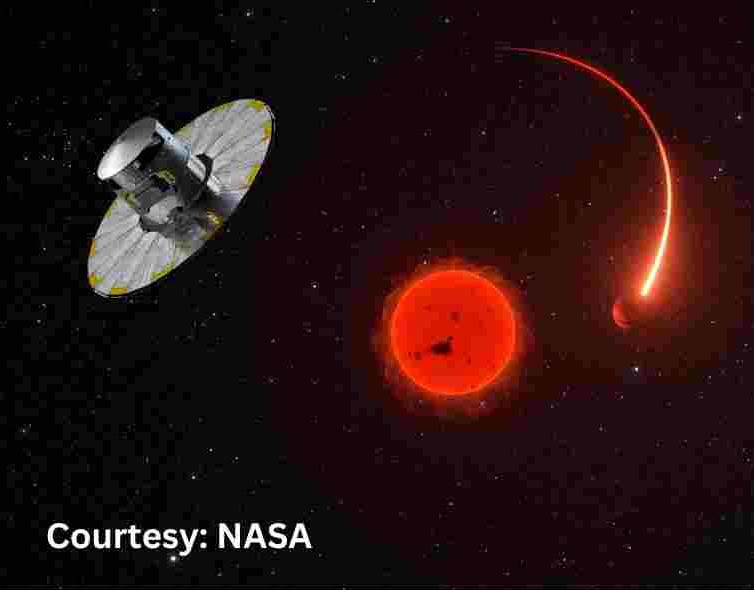Gaia Spacecraft Unveils a Giant Exoplanet—A First in Space Exploration!
A massive planet located 244 light-years from Earth has been discovered using data from the European Space Agency’s Gaia satellite. This newly identified exoplanet, named Gaia-4b, marks a historic milestone as the first planet found solely through Gaia’s observations.
A Groundbreaking Discovery
Although Gaia officially ended its scientific operations in January 2025, the vast amount of data it collected will continue to be analyzed for years. Over the past decade, the spacecraft monitored billions of stars, using a technique called astrometry to track their precise positions.
For stars in our cosmic neighborhood, Gaia’s measurements were so accurate that they detected tiny wobbles in a star’s movement—caused by the gravitational pull of an orbiting planet. This motion, which makes the star appear to shift in a corkscrew pattern, was observed in many stars. However, Gaia-4b is the first confirmed exoplanet detected this way.
A Colossal Planet with a Chilly Orbit
“Gaia-4b is about 12 times the mass of Jupiter,” said Guðmundur Stefánsson from the University of Amsterdam, who led the study. “It has an orbital period of 570 days, meaning it is a relatively cold gas giant.”
This long orbit suggests that Gaia-4b is positioned far from its host star. Interestingly, the star itself is much smaller than our Sun, with only about 60% of its mass.
Why This Discovery Matters
Large planets orbiting small stars are rare, but when they do exist, they create a more noticeable wobble, making them easier to detect using astrometry. “Massive planets around low-mass stars don’t happen often, but when they do, their gravitational effect on the star is much stronger, producing a clear signal,” explained Guðmundur.
Most exoplanets discovered so far have been detected using the transit method, which looks for tiny dips in a star’s brightness when a planet passes in front of it. This technique mainly finds planets in close orbits. However, Gaia’s data could reveal thousands of planets in distant orbits, offering a more complete picture of planetary systems beyond our solar system.
A New Era in Exoplanet Hunting
The discovery of Gaia-4b is just the beginning. As scientists continue to analyze Gaia’s vast dataset, more distant exoplanets could soon be uncovered. These findings will help astronomers understand the diversity of planets across the universe and reshape our knowledge of planetary formation.
With Gaia’s legacy still unfolding, the search for hidden worlds in our galaxy is far from over!










